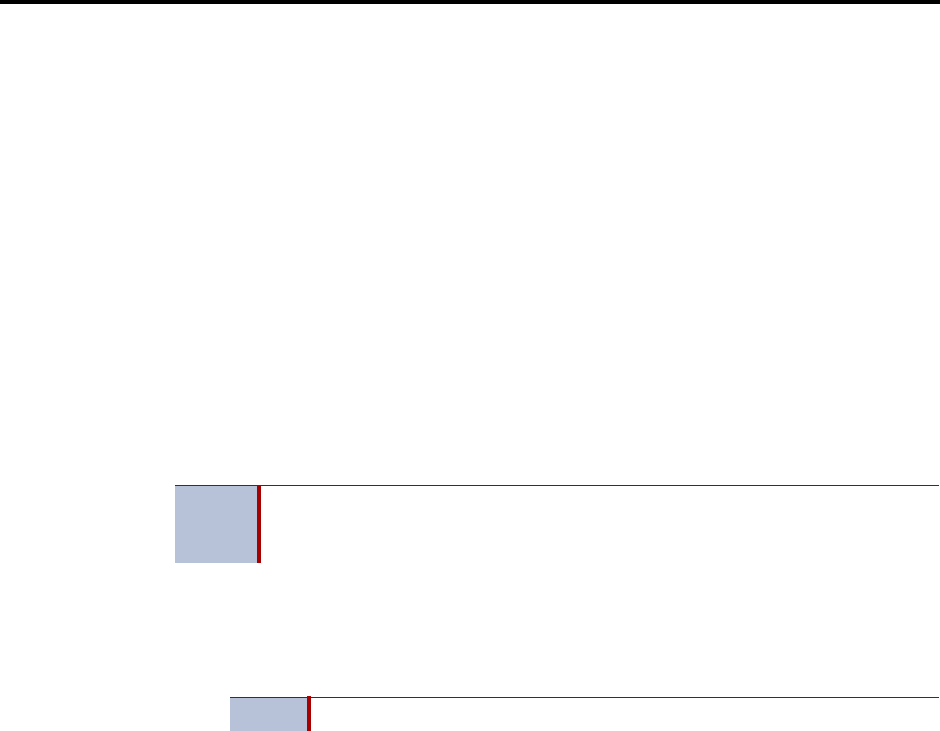
System Features
INTER-TEL
®
CS-5200/5400 ADMINISTRATOR GUIDE, ISSUE 1.1 – August 2005
Page 186 Outside Calls
Outside Calls
When a trunk is selected for receiving or placing an outside call, the voice channel is seized
and cannot be used by any other endpoint (unless the Conference feature is used, see
page 202). If the desired trunk is busy, the user can camp on or request a queue callback. Other
features that apply to both outside and intercom calls are discussed later in this section of the
manual. They include placing calls on hold, call waiting, call transfer, reverse transfer, confer-
encing, and call forwarding. Refer to page 154 for an explanation of outgoing-access, allowed-
answer, and ring-in assignments.
Placing Outside Calls
Inter-Tel endpoints can be programmed to select a trunk, a trunk group, or ARS when a Call
button is pressed. In the default state, all Call buttons are programmed for ARS access.
On display endpoints, the dialed number is displayed with hyphens separating the toll field,
equal access field, area code, office code, hookflashes, pauses, asterisks, pounds, Centrex
codes, and/or absorbed digits. When the system absorbs local trunk digits, the digits are dis-
played even when they are not dialed. (For example, if 423 is absorbed and 6767 is dialed,
423-6767 is displayed.).
To place an outside call:
1. Lift the handset. (Inter-Tel endpoint users can dial on-hook by skipping this step.)
2. Select an outgoing trunk, using one of the methods below. The associated individual
trunk or Call button flashes slowly. (If on-hook, the Speaker button is lit.).
Model 8660 or 8662: Press the OUTGOING menu button.
Any Inter-Tel endpoint: Select a trunk using one of the following methods:
• Press an individual trunk button for direct access.
• Enter a trunk group access code (92001-92208) or press a trunk group button. This
selects a trunk in the chosen trunk group. (If the group has not been programmed,
the display shows NO TRUNKS IN TRUNK GROUP.)
• If your endpoint is programmed to select a trunk group when a Call button is
pressed, press a Call button for outgoing access.
• Refer to the Automatic Route Selection (ARS) procedure on the next page.
• Enter the Outgoing Calls feature code (8). This automatically selects an outgoing
trunk according to the programmed outgoing access mode for your endpoint.
Single line endpoints: Select a trunk using one of the following methods:
• Enter the Outgoing Call feature code (8). This automatically selects an outgoing
trunk according to the programmed outgoing access mode for your endpoint.
• Enter a trunk group access code (92001–92208).
• Refer to the Automatic Route Selection (ARS) procedure on the next page.
3. You hear one of the following signals:
• Outside dial tone: Manually dial, speed dial, or redial the desired phone number
or use the outside directory. (Display endpoints show the numbers dialed. When
NOTE
When placing a call, begin dialing before the Dial Initiation timer expires. If the
timer expires, the system drops the trunk connection and sends repeating reor-
der tones. This prevents a trunk from being tied up accidentally.
NOTE You must have outgoing access to a trunk to seize it.
